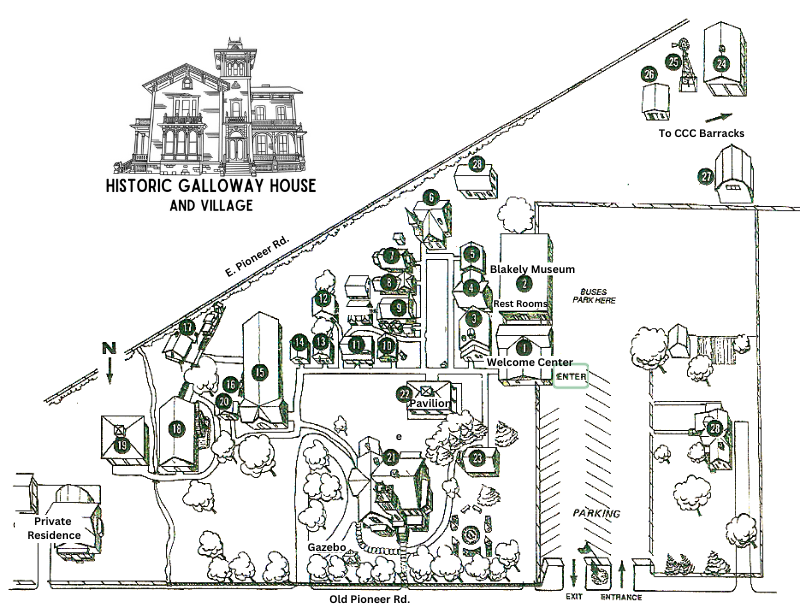What Will I See When Visiting?
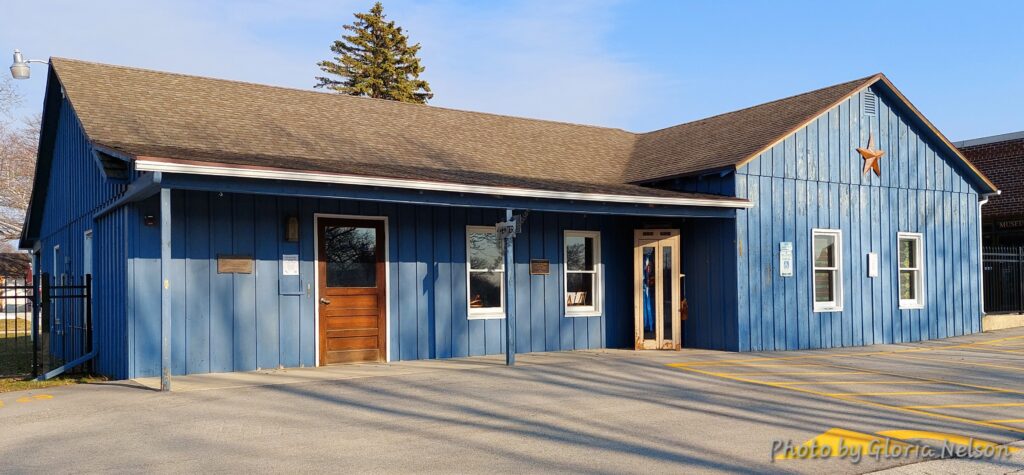
Welcome Center & Gift Shop (1)
The Welcome Center provides a reception area for visitors and is home to the Gift Shop. Although constructed in 1970, the building incorporates numerous architectural treasures from the area: chandeliers from The Colony Restaurant (1960s-1970s), stained glass windows from the Pier home on Main Street, and a water “bubbler” from in front of the old JC Penney store on South Main Street, Fond du Lac. Available for sale in the Gift Shop are Wisconsin history books on diverse topics, Fond du Lac area and Historic Galloway House and Village souvenirs, hand-crafted items, and much more!

Candy Store and Factory Display (1)
Inside the Welcome Center is Hope’s Candy Store, a delightful exhibit of candy-making equipment, decorations, back bar and display cases. In 1888 George Hope, Sr. started the business selling popcorn balls, roasted peanuts and hard candies. His special creation was a unique homemade product called Original Pan Candy. The candy-making business was passed down through the family and eventually sold to Henry Wetter and Royal Brazier. Also on exhibit is the rich history of Boex-Holman or Bonita Candy Factory, located at First and Adams Street, Fond du Lac. Learn about candy creation, the talented female labor force, how candy was touted as a cure for alcoholism, and the cutting edge methods (post-World War I) for climate controlling the warehouse.
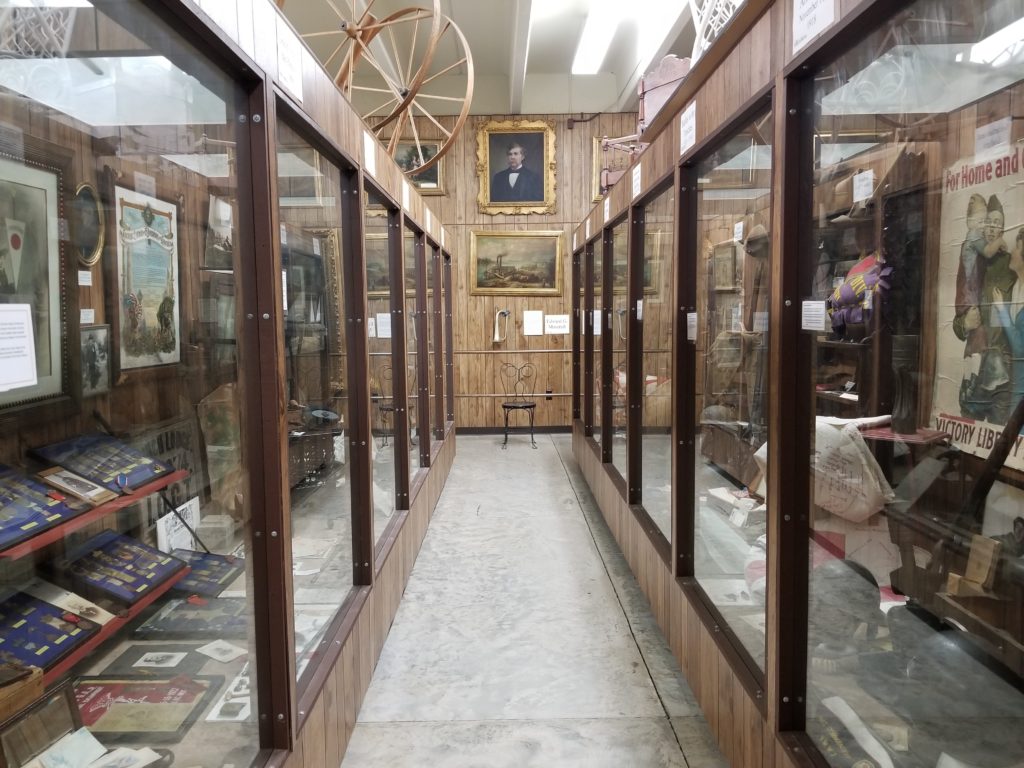
Blakely Museum (2)
The Blakely Museum was built in 1981 to showcase the extensive historical artifacts and memorabilia collected by the Society since its founding in 1948. In addition to changing exhibits, the Blakely contains a stunning collection of World War I Trench Art (soldier-created art from whatever material was at hand in the trenches, often spent artillery casings); original paintings by world-renowned local artists Owen Gromme, Edward Mascraft and Mark Robert Harrison; and the extensive Rueping Collection of Native American artifacts. Permanent exhibits are arranged chronologically: Fur Trade to Settlement, Civil War, Dawn of New Society at War’s End, The New Century, Roaring Twenties, Agriculture, Prohibition, Great Depression, World War II, and Life After War.
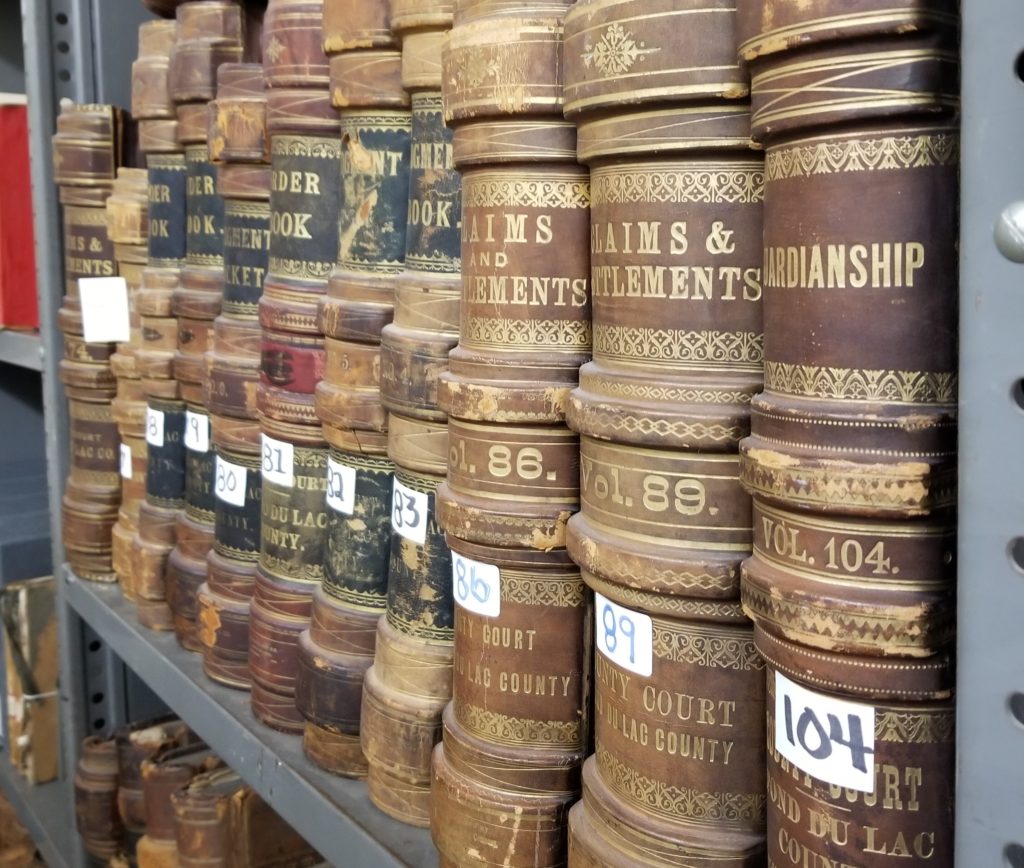
Fond du Lac County Historical Society Library (2)
The Fond du Lac County Historical Society Library serves as a repository for many of the documents associated with Fond du Lac County history: Ray Thornton’s collection of old photographs, early probate records, township tax and assessment rolls, early published histories and city directories, business listings, and numerous family Bibles including the Tallmadge Family Bible. A resource for genealogists, students, researchers and history aficionados of all kinds!

School (3)
Willow Lawn School, one of the earliest one-room schools in Fond du Lac County, remained in use on Hickory Road until 1963. The school is furnished with double desks from the Oakfield district as well as textbooks and educational materials from many local citizens. Photographs relating to history of education in the county, including 1901 and 1903 high school class photos, are on display.

Dress Shop (4)
This 1880-era private residence of John Chafaris was moved in 1974 from 240 Linden Street to The Village mall. Miss Margie’s Dress Shop exhibits the tools and products of the dressmaker’s trade and other handcrafts. Displays include the gown worn by Maria Pettibone Spooner at Theodore Roosevelt’s Presidential Inauguration in 1904.
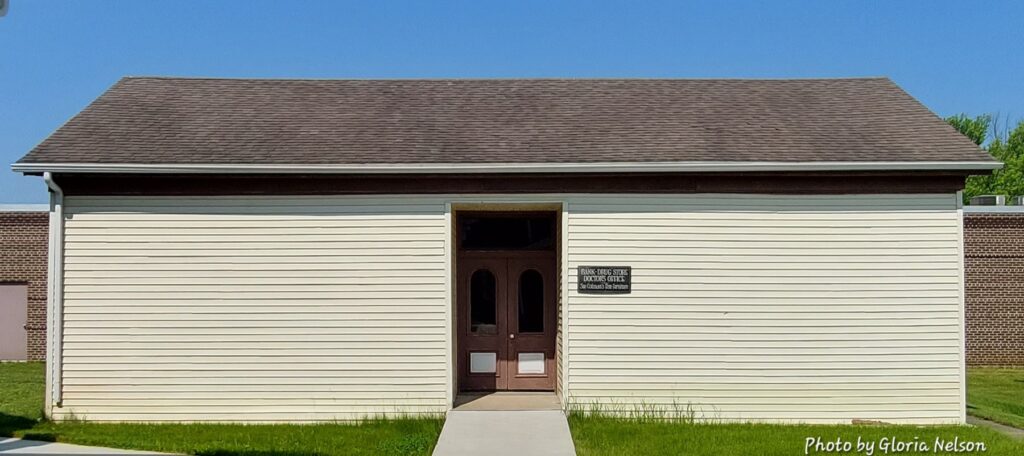
Bank, Barbershop Doctor’s Office, & Drugstore (temporarily off exhibit) (5)
The Empire Building, former school and town hall, is divided into four exhibits. The banking area includes the vault door from the former County Courthouse. The barbershop displays a variety of implements such as shaving mugs and chairs for children and adults. The drugstore houses collections of medicines, prescriptions and pharmacy tools from Plank’s, Thiel’s and St. Agnes Hospital drugstores. The doctor’s office includes an examination table, emergency travel bag, and other turn of the century medical supplies, donated by the family of Dr. Milo Scheid of Rosendale.

Church (6)
Built in 1891, the Eldorado church was moved to The Village in 1969. The church retains its original pump organ, altar, chairs instead of pews, and the bell in the tower. Additional artifacts include several baptismal fonts and pews from other area churches. In addition, the church is home a Strascino piano, manufactured in Fond du Lac in the 1890s.

Courtroom & Lawyer’s Office (7)
This historic building — the first schoolhouse in the county and later Taycheedah Community Center — was built in 1842 on land owned by Governor Doty, about five miles west of the Galloway Village. During the Civil War, women sewed outfits of denim here, before soldiers were issued their regular uniforms. The building has since been restored as a courtroom and law office. Treasures include law office furnishings used by General Edward S. Bragg (1827-1912), materials from the old Fond du Lac County Courthouse, and portraits of area judges from early 1900s to the 1970s.

Toy Shop (8)
Originally the gatehouse at the Fond du Lac County Fairgrounds, this unique building displays toys from mid-19th century to the 1930s. The nucleus of the collection is a donation from Carol Candlish Whitehouse and her husband William I. Sanders, with donated heirlooms from many other individuals. One such treasure, Rollie Martin’s toy train board, reflects 1890s Fond du Lac when the circus came to town.
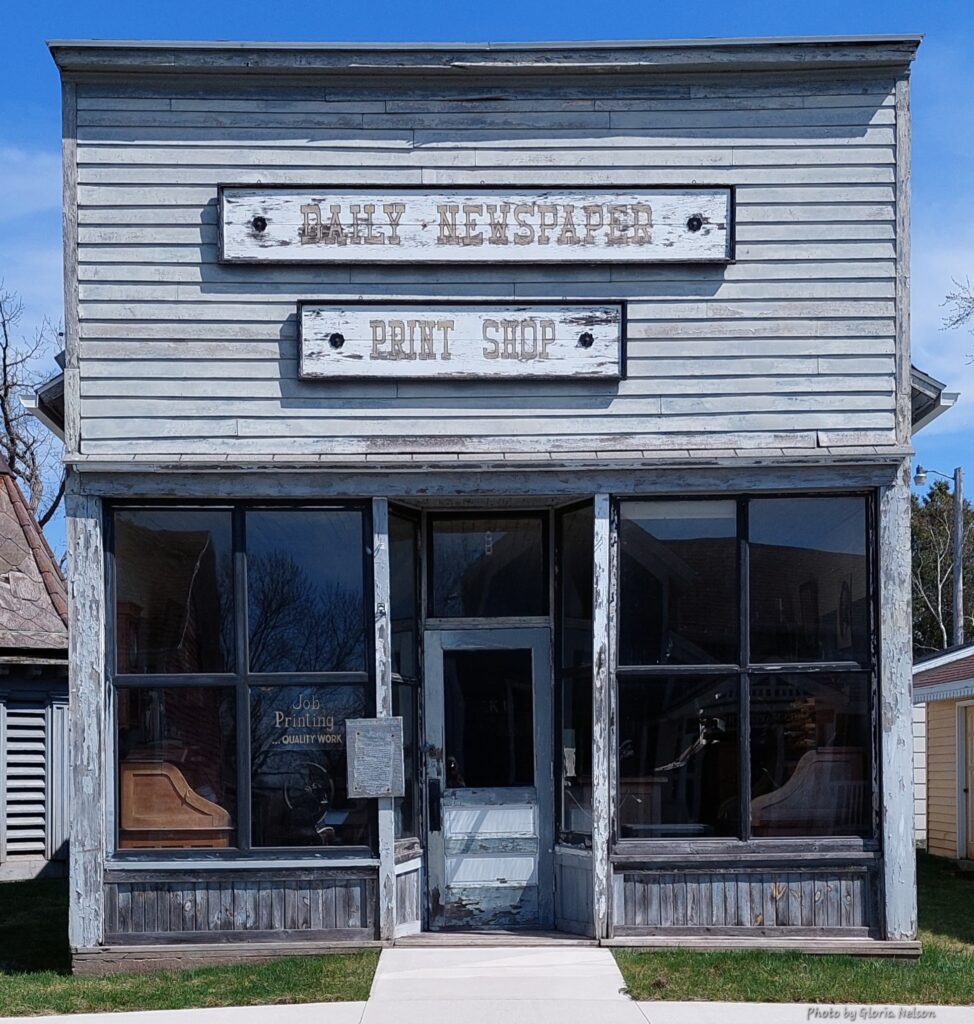
Newspaper & Print Shop (9)
Once a Greek coffee and pastry shop run by the Micklos family at 182 W. Johnson Street in Fond du Lac, the building housed various businesses prior to being moved to The Village. Now a full print shop typical for a mid-sized town newspaper–complete with presses and cases of both foundry and wooden type–occupies the space.
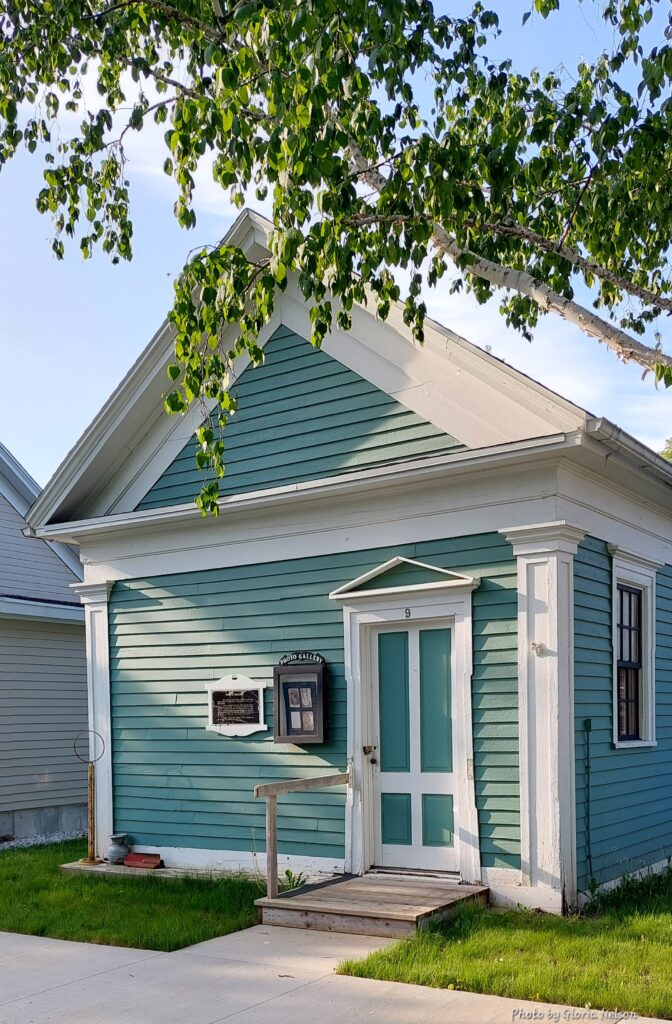
Photography Studio (10)
Formerly the lumber company office of John O. Griffith on Forest Avenue & Tallmadge Street, this Greek Revival style building was moved by flatcar to Hamilton Hill as office space for Western Lime and Cement Company, then was donated in 1965 to The Village. Now the Thornton Photo Gallery houses original photographic equipment (cameras, backdrops, posing stools), prints, and Daguerreotypes from the turn of the century. Of special note, the studio houses a 3-D camera with Waterhouse stops, Lantern slide projector used by Governor Tallmadge, early reflex camera, developing tanks and drying racks, oil darkroom light and other unique artifacts.
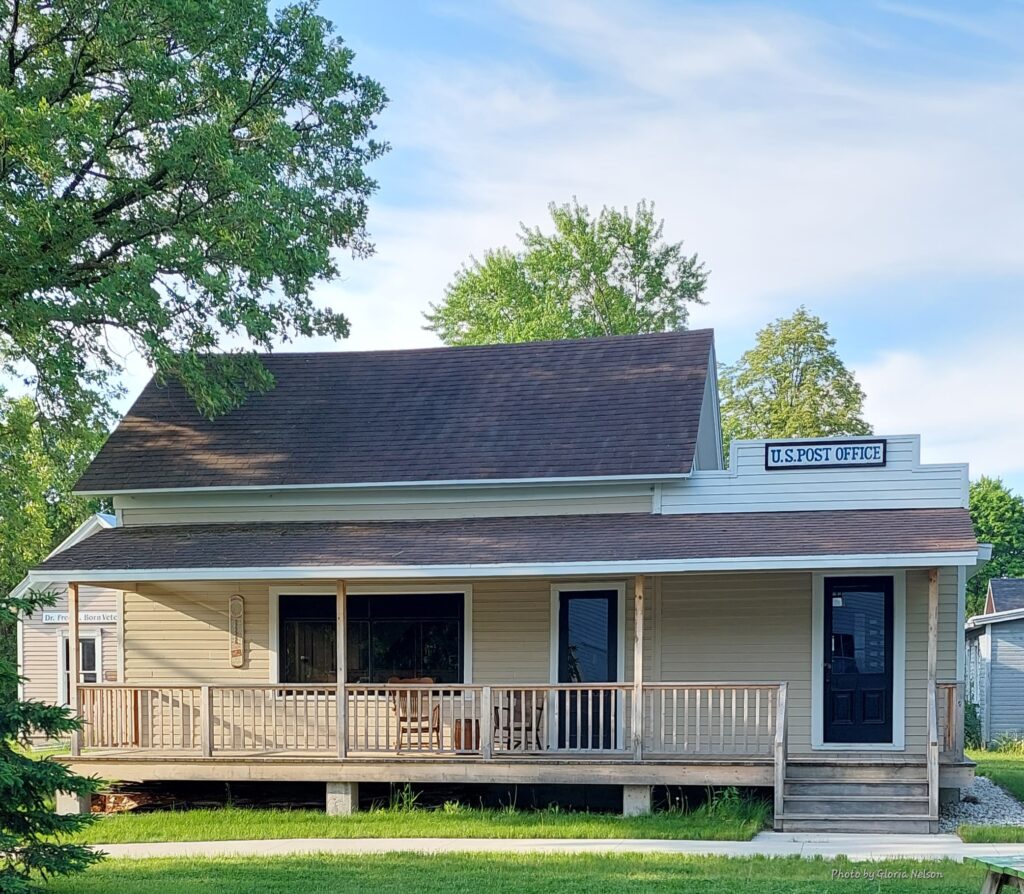
General Store & Post Office (11)
The social gathering spot of a small village included the U.S. Post Office and general store stocked with food, dry goods, housewares and medicines for man and beast. It is easy to imagine a game of checkers being played near the potbelly stove as consumers browse the merchandise. This building was originally part of the Western Lime and Cement Company property at Marblehead.
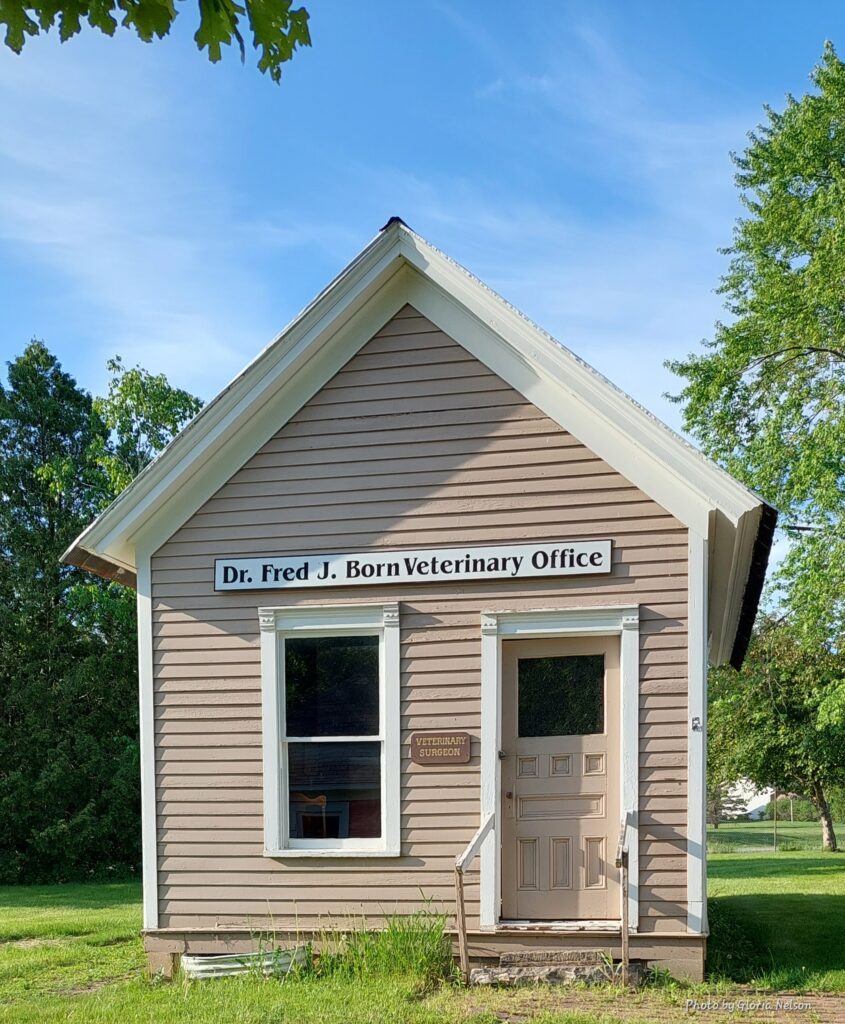
Veterinary Office (12)
One of only five veterinary museums in the United States, the Dr. Fred J. Born Veterinary Office houses many valuable, some priceless, relics of the past. This building houses more than 500 veterinary texts and farriery manuals dating post-1860, nearly 800 instruments including an English fleam (bleeding knife) from 1830, vintage 1880s equine anatomical chart, cases of veterinary drugs, and an antique show dog shipping crate. The building formerly served as the Marblehead Quarry Office.

Beauty Shop (13)
Miss Erna Keuler’s Mt. Calvary Beauty Shop, a salon fully furnished in 1930s art deco style, houses a permanent wave machine and other vintage equipment.
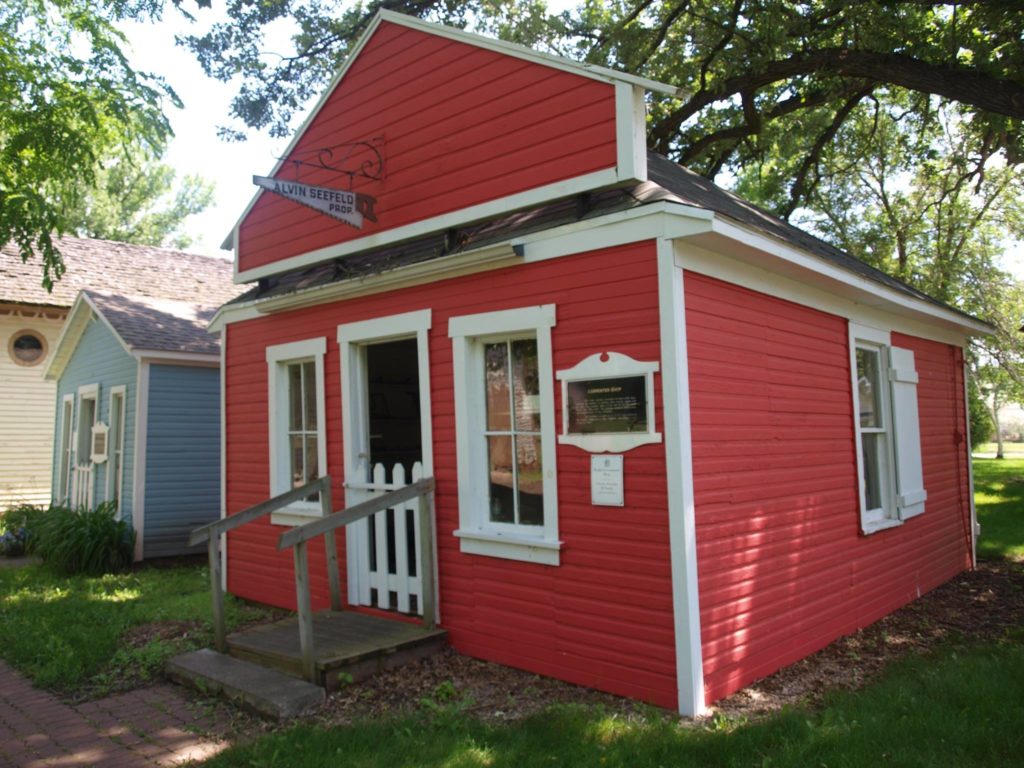
Carpenter Shop (14)
This former Fond du Lac Fairgrounds building was given new life by Alvin Seefeld to house the Society’s vast collection of early craft tools early settlers used to build and repair their homes and to fashion furniture. One item of interest is the large wooden lath said to have come from the first Giddings & Lewis Machine Shop. This museum displays a great selection of planes, saws and other special tools including a schnitzelbank for making cedar shingles.
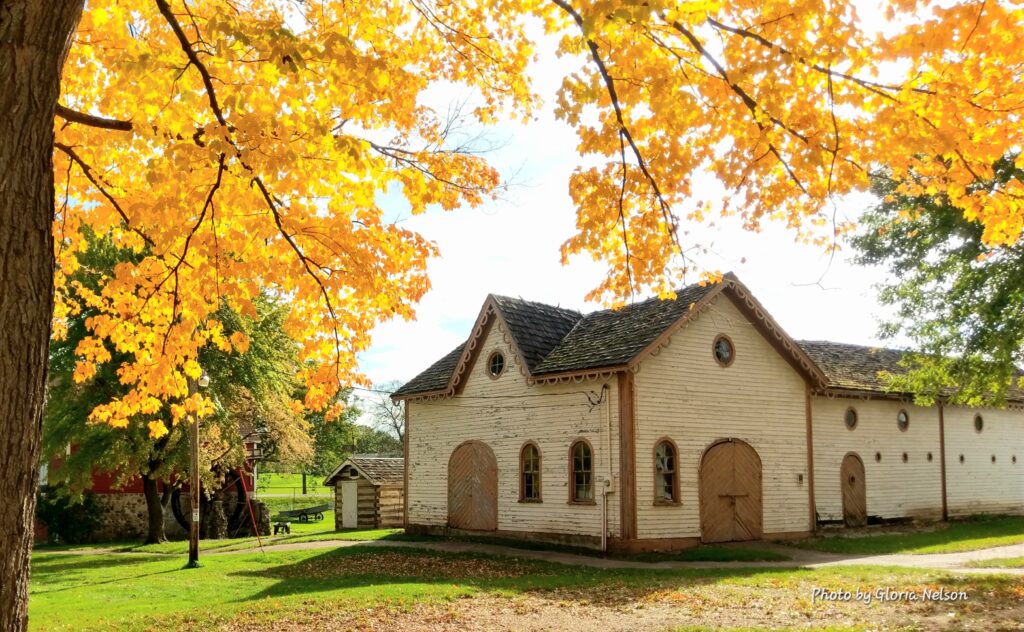
Carriage House (temporarily off exhibit) (15)
The north half of the Melrose Carriage House is one of the original buildings of the Galloway family farm, and housed vehicles as well as the horses. In 1968 the structure was enlarged to provide greater exhibit space. Visitors will see an Abel Brothers’ 1901 automobile and numerous horse-drawn carriages. Other artifacts include a milk wagon, dog/goat treadmill used to run small machines, leather shop, Michler sleigh, log gas mains from Fond du Lac, vintage marine motors, early farm equipment, and equine care supplies.
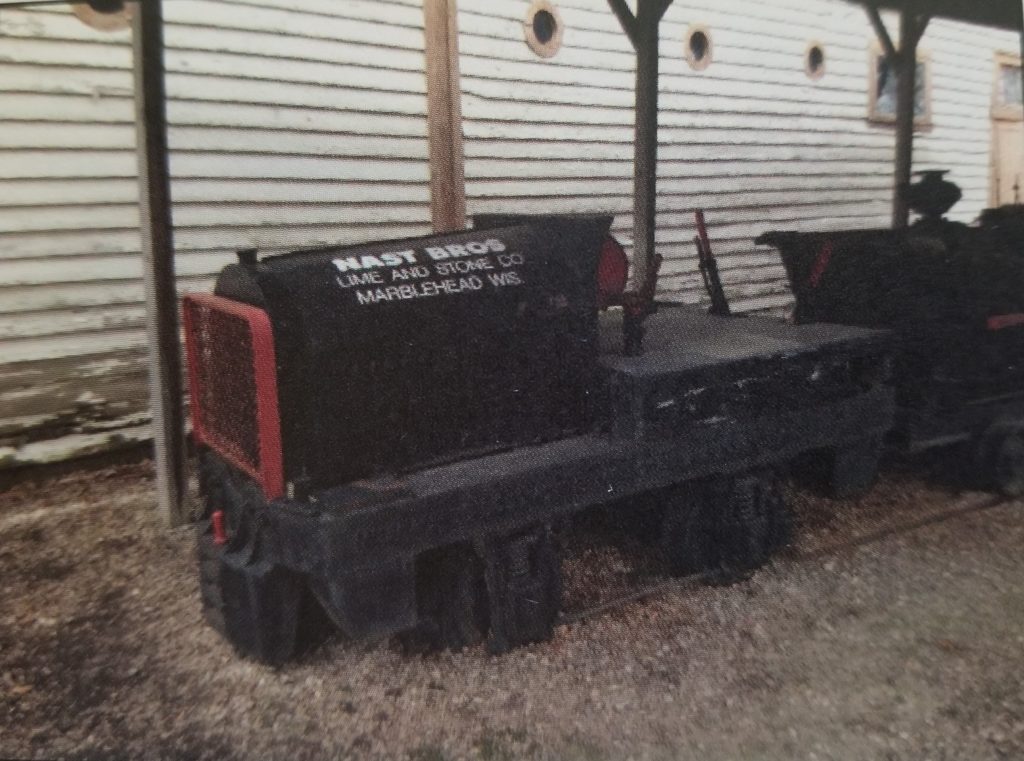
Quarry Locomotive & Stone Car (16)
This equipment was used for nearly thirty years after being purchased in 1917 by Nast Brothers Lime & Stone Co. of Marblehead. The exhibit features a 4-cylinder gasoline engine locomotive made by Milwaukee Locomotive and Mfg. Co. and a stone car capable of carrying 1500 lbs of stone. Each locomotive could pull six stone cars fully loaded!
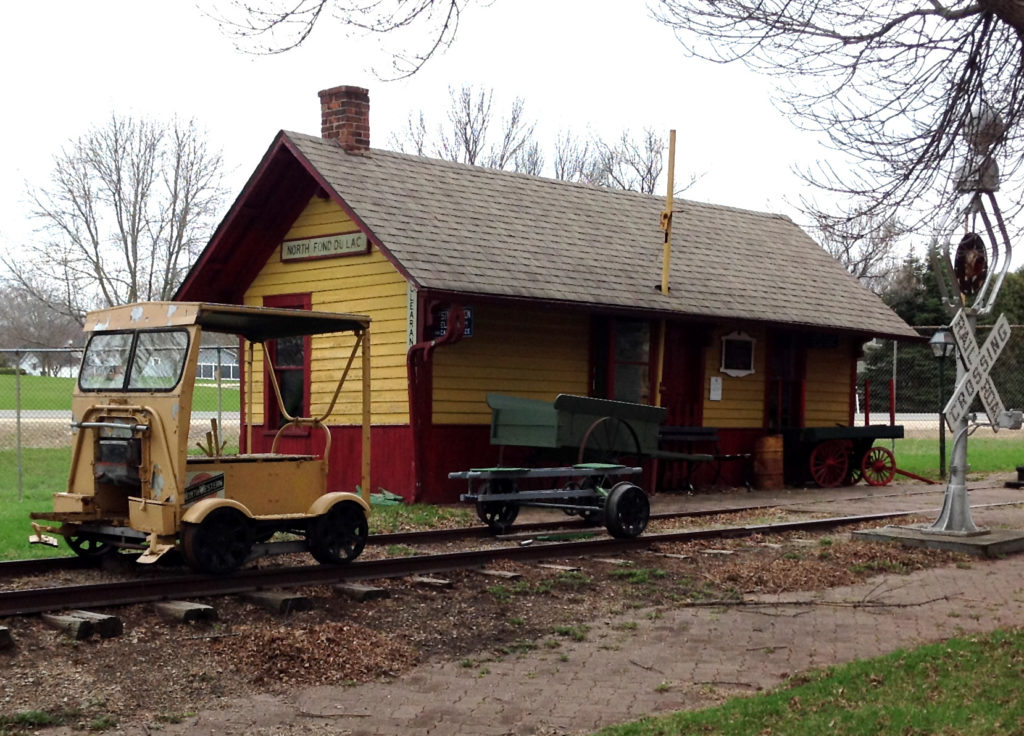
Railroad Depot (17)
Weller Railroad Depot is a typical small village depot displaying various pieces of equipment and memorabilia donated by Fred A. Weller. The display includes a 3-wheeled handcar, a gas-motored rail inspection vehicle, crossing sign, switch, seating from area depots, various railroad charts, timetable racks, baggage scale, and potbellied stove of the type often used in cabooses.

Soo Line Caboose (17)
This turn-of-the-century railroad caboose is one of the last wooden cabooses used by the Soo Line, and was retired in 1973.
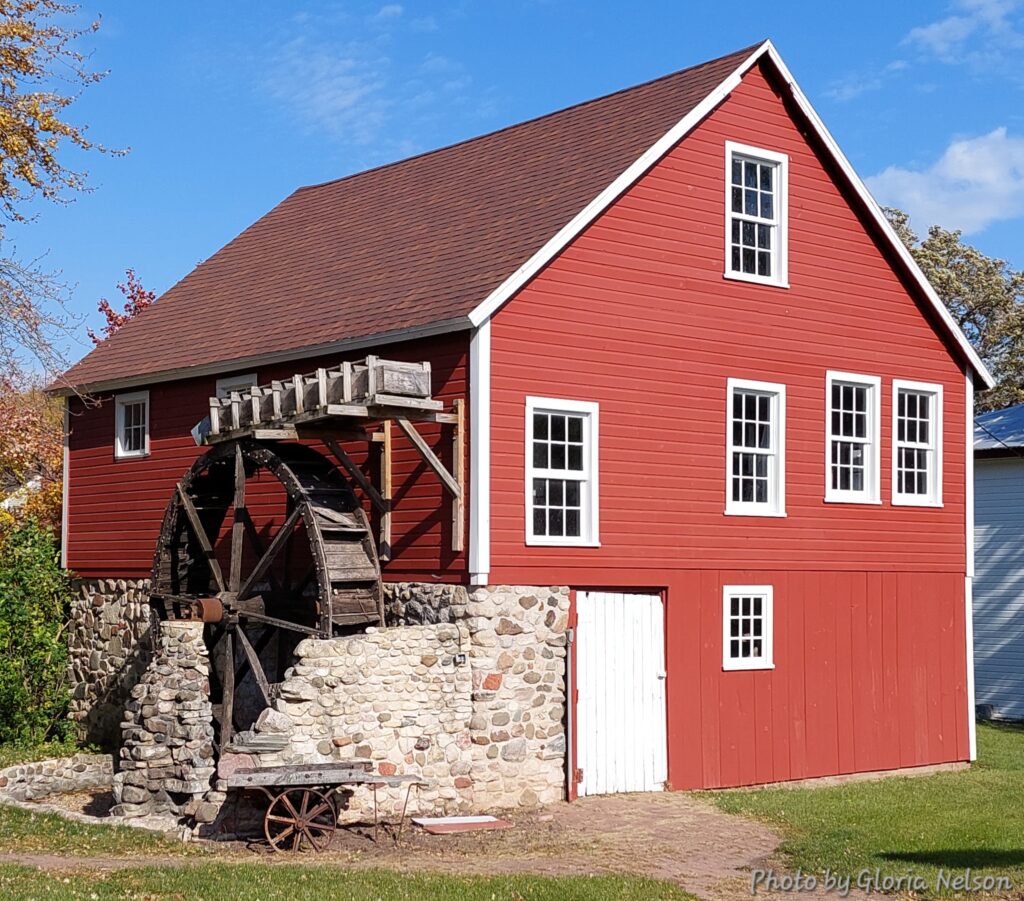
Grist Mill (18)
In 1856, Selim Newton (original builder and owner of the Galloway house) together with Daniel and Thomas Treleven, built this mill in the Town of Empire. The mill had various owners over time; Emma Krug was the last before the mill was reconstructed at the Village in 1966, under the supervision of H.A. Ladwig. Most mills are built in or by ravines and driven by flowing water. The gears, shafts and grinding stones are original.
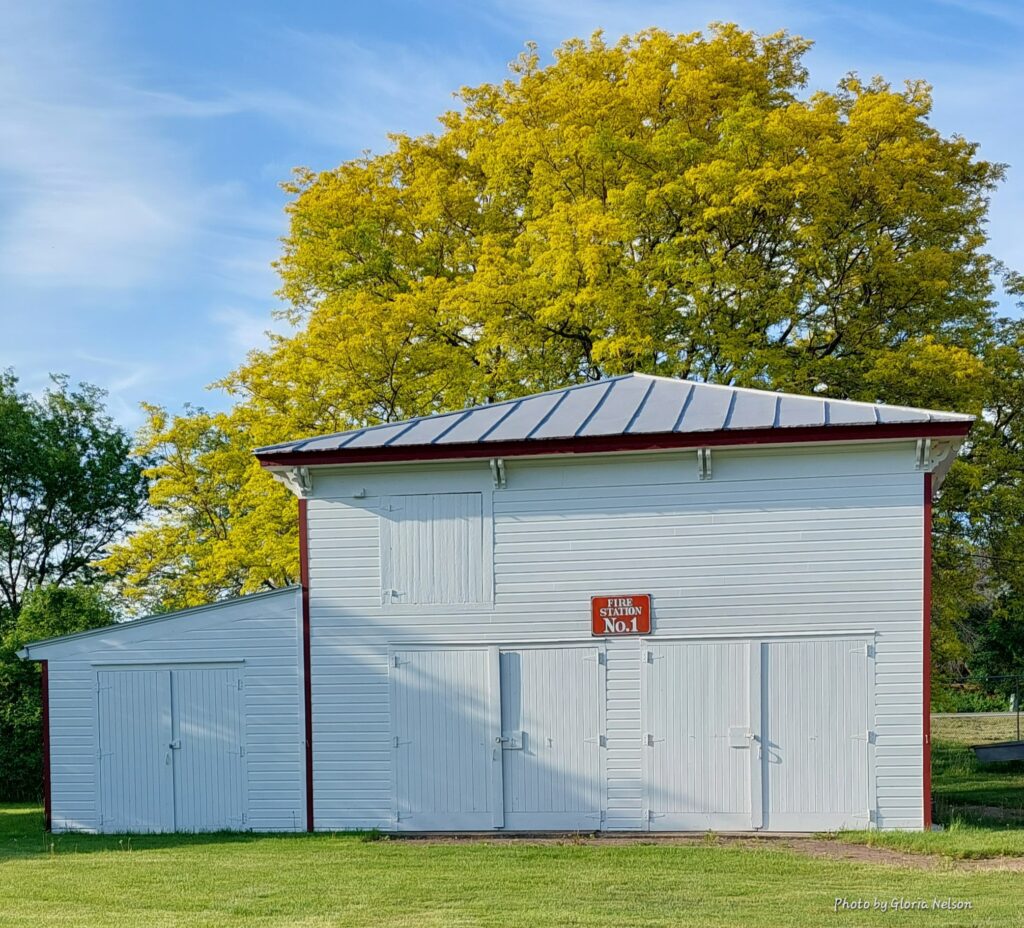
Firehouse (19)
Originally a carriage house for a well-to-do family on Superior Street in Fond du Lac, the Firehouse was moved to the Village in 1976. Protection of a blossoming community from the devastating effects of fire was of vital importance, and volunteer fire departments are one of the oldest civic organizations. Communities such as Fond du Lac took great pride in their fire fighting equipment and volunteers. The Village Firehouse displays a 1900 hand-pumper and two-wheel hose cart, a 1929 International Six Speed Special ladder truck, a telegraph repeater, Browder Life Saving Machine for catching people trapped in upper floors of burning buildings, and numerous other artifacts and equipment.

Blacksmith Shop (20)
This old log structure from east of Fond du Lac was dedicated as the Schaefer Smithy in honor of Simon Schaefer, a moving force in the early years of the Historical Society. The blacksmith was an integral member of a society reliant on horses for agriculture and transportation. The Schaefer Smithy is outfitted with a forge and various tools used in the creation and repair of the ironworks that helped build the community.
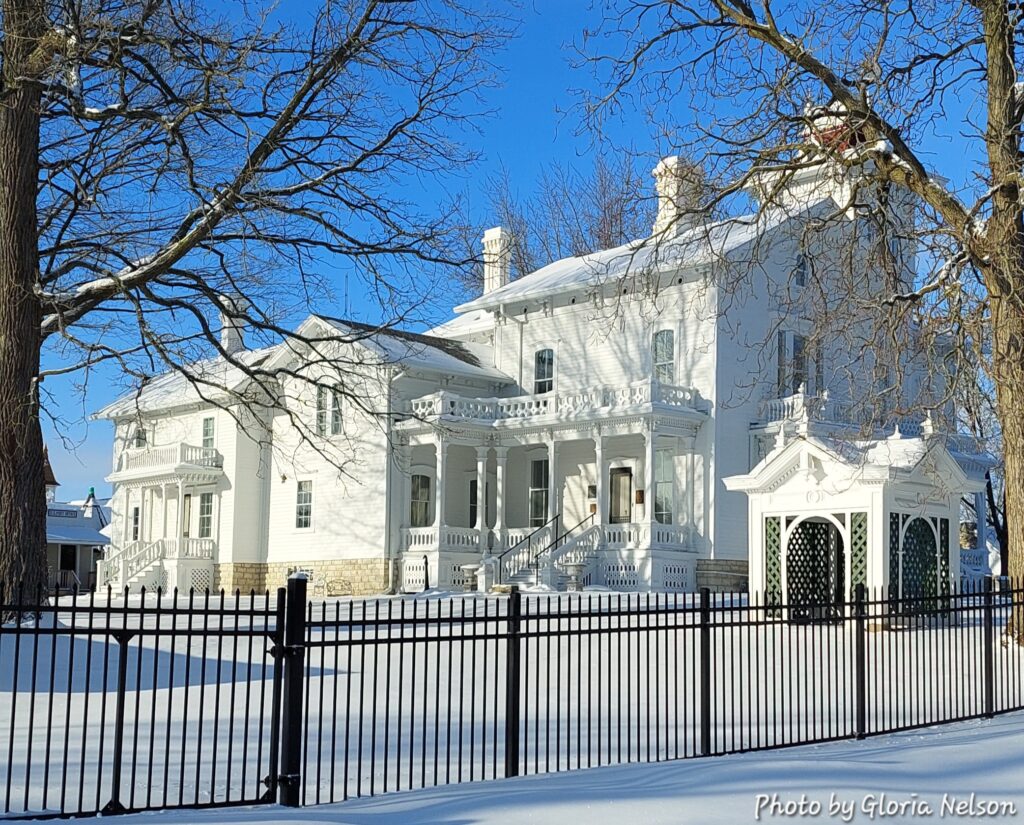
Galloway House (21)
Faithfully preserved room-by-room with original Galloway family furniture, household items, and personal memorabilia, the Galloway House was presented to the Fond du Lac Historical Society in 1954 by Edwin P. Galloway and his sister Therese, grandchildren of the original Galloway owner. Edwin H. Galloway purchased the property in 1868, expanding upon the original log-block house (what became the summer kitchen) until his death in 1876. His son, Edwin A. Galloway, continued the remodeling project until the Victorian mansion we see today was completed between 1878-1880. Elegant yet functional, boasting “modern conveniences” such as running water, a dumbwaiter, electric doorbell system, and in-house speaking tube to communicate between the first and second floor, the Galloway mansion was the focal point of a productive working farm.
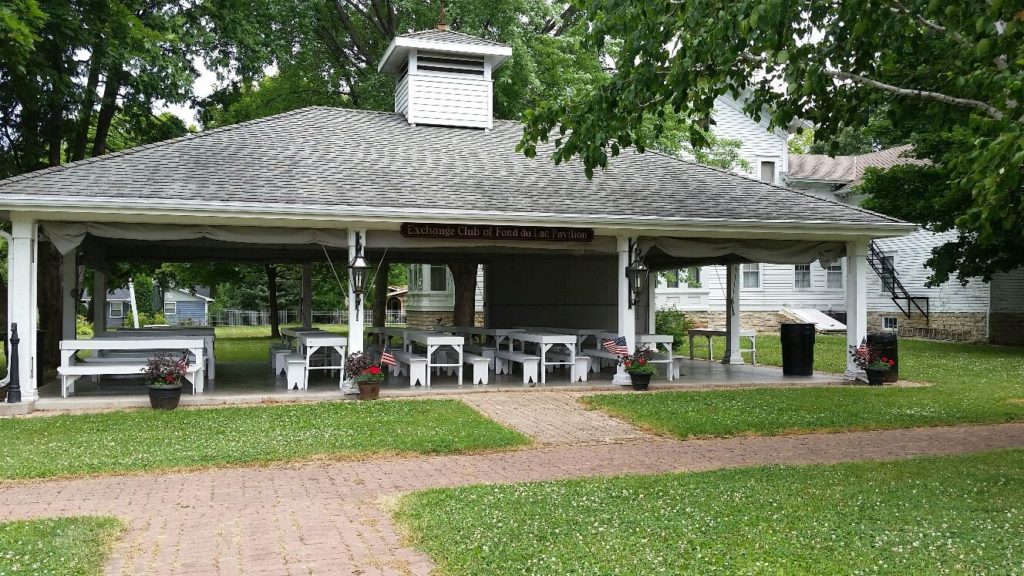
Exchange Club Pavilion (22)
The Exchange Club Pavilion is centrally located in The Village and is a great place for a picnic lunch. It is also used by the Historical Society during special occasions for kids’ activities, food service, and entertainment. The Pavilion can be rented for special events like bridal showers, reunions, baby showers, or craft fairs.

Rausch Log Cabin (23)
Originating from the Town of Lamartine on property known as the Rausch Farm, the cabin was donated to Historical Society in 1962. It is furnished in traditional 19th century style with a rope bed, snowshoes, pie safe, various cast iron cooking equipment, and much more.
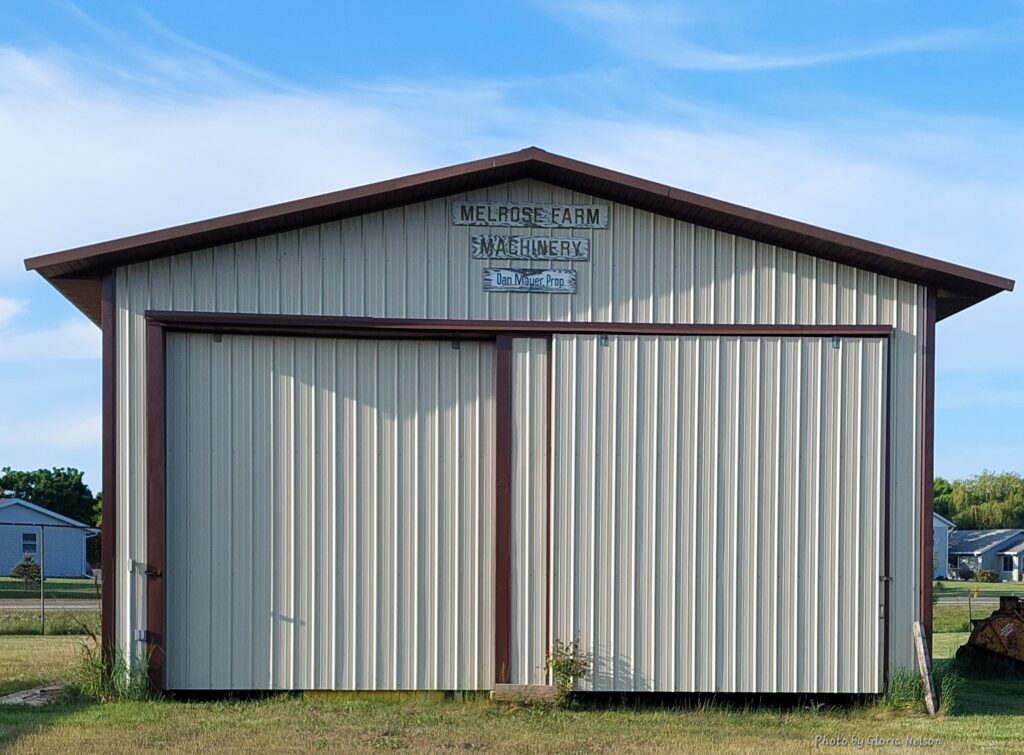
Machine Shed, Machinery (24)
The Mayer Farm Shed was installed in 1993 thanks to Dan and Rosella Mayer and Al Ericksen. Inside the shed are a 24HP Minneapolis steam engine (1917), Bell City threshing machine (pre-1914), corn husker and sheller (1910-1920) and miscellaneous machinery.

Berkholtz Machine Shop and Windmill (25,26)
The Berkholtz Machine Shop has a lengthy family heritage. Built in 1897 in Juneau, WI, for Berkholtz Water Wells, Inc., the building later operated as a machine shop by self-taught machinist August Berkholtz. Since donation to The Village in 1995 by Dick Berkholtz, the fourth generation to head the company, the building continues to exhibit a working machine shop. The windmill, donated by the Sisters of St. Agnes, was relocated from a farm south of Fond du Lac with the assistance of Wisconsin Power & Light, Co. Windmills such as this ran deep well pumps to provide a constant supply of water for livestock and farm operations.

Woicek Barn (27)
A story of immigrant ingenuity and community pride encompasses the history of Woicek Barn, moved from the property of North Fond du Lac School District to The Village in 2000. The barn was crafted in 1939 by Lithuanian immigrant and Soo Line railroad employee Boleslaw “Bill” Woicek from scrap railroad car lumber and other discarded materials including a box car ladder for accessing the haymow. As part of the Village, the Woicek barn represents pre-World War II farming with its original hay track and ongoing additions of vintage stanchions, implements and other agricultural artifacts.

Springvale Town Hall (28)
One of the most important aspects of citizenship is the right to vote. Springvale Town Hall typifies a 19th century town hall complete with ballot boxes, built-in voting booths and railings to limit access to the voting area, and a raised platform on which town officials conducted meetings. The Springvale Town Hall was originally located south of Rosendale.

Adams House (29)
The Adams House holds a special place in the story of the Historic Galloway House and Village. It was built ca. 1867 by Maria Adams Galloway for her recently widowed cousin Augusta. Years earlier, Maria had visited Augusta and her husband Dr. James Adams where she met and fostered a friendship with Edwin H. Galloway, eventually marrying him in 1849. The widow Augusta lived in the home until her death in 1896. The Adams lost two sons in military service during the Civil War, but their daughter Sedate’s children were playmates of the Galloway children. After being a private residence for many years, in 1988 Edwin P. Galloway purchased the property for the Historical Society. The Adams House now serves as the Society’s administrative offices.

CCC Barracks (30)
This replica Civilian Conservation Corps barracks was built to honor the history and accomplishments of the CCC and the more than 1,500 Fond du Lac young men who served between 1933 and 1942. On display are bunks, trunks, mess hall dishes, tools and many photographs and documents pertaining to the CCC.
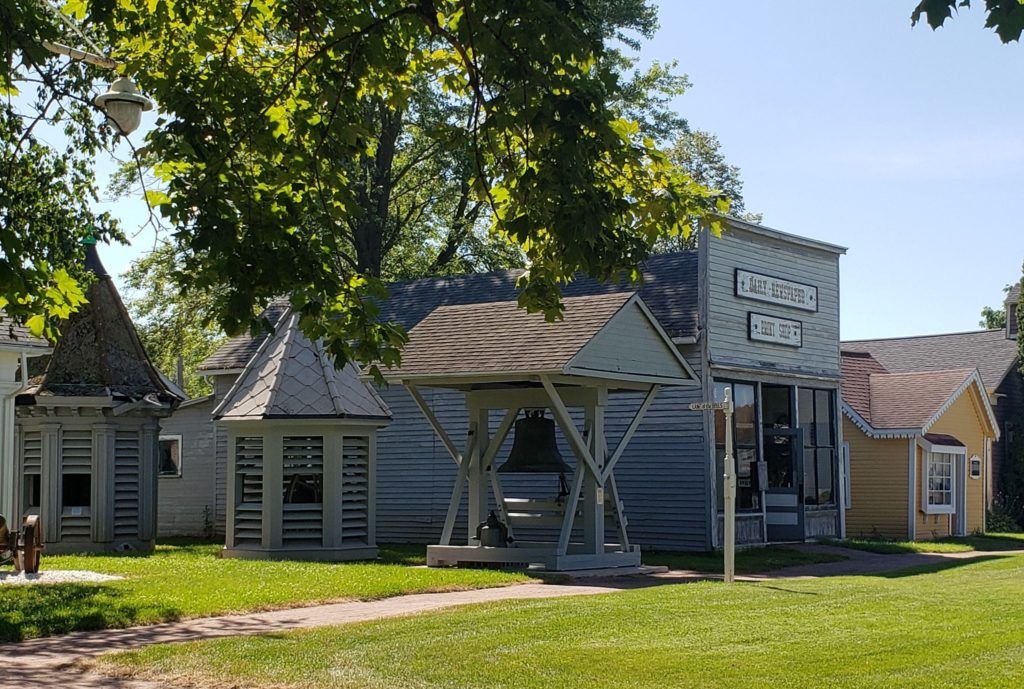
Bells and Belfries (31)
Bells hold a very special place in the heart of a community; they call to worship, start and end the school day, and raise the alarm in times of emergency. Preserved at The Village are 1) the 3000 lb Old Courthouse Bell (1900) gifted to Fond du Lac by noted artist Mark R. Harrison; 2) the No. 1 Fire Station Bell (1870) formerly located at 25 E. Second Street, Fond du Lac; and 3) a 34 inch brass bell (1872) which graced several Fond du Lac schools until 1981, when the bell and its belfry were moved to The Village by the Donald Blakely family.
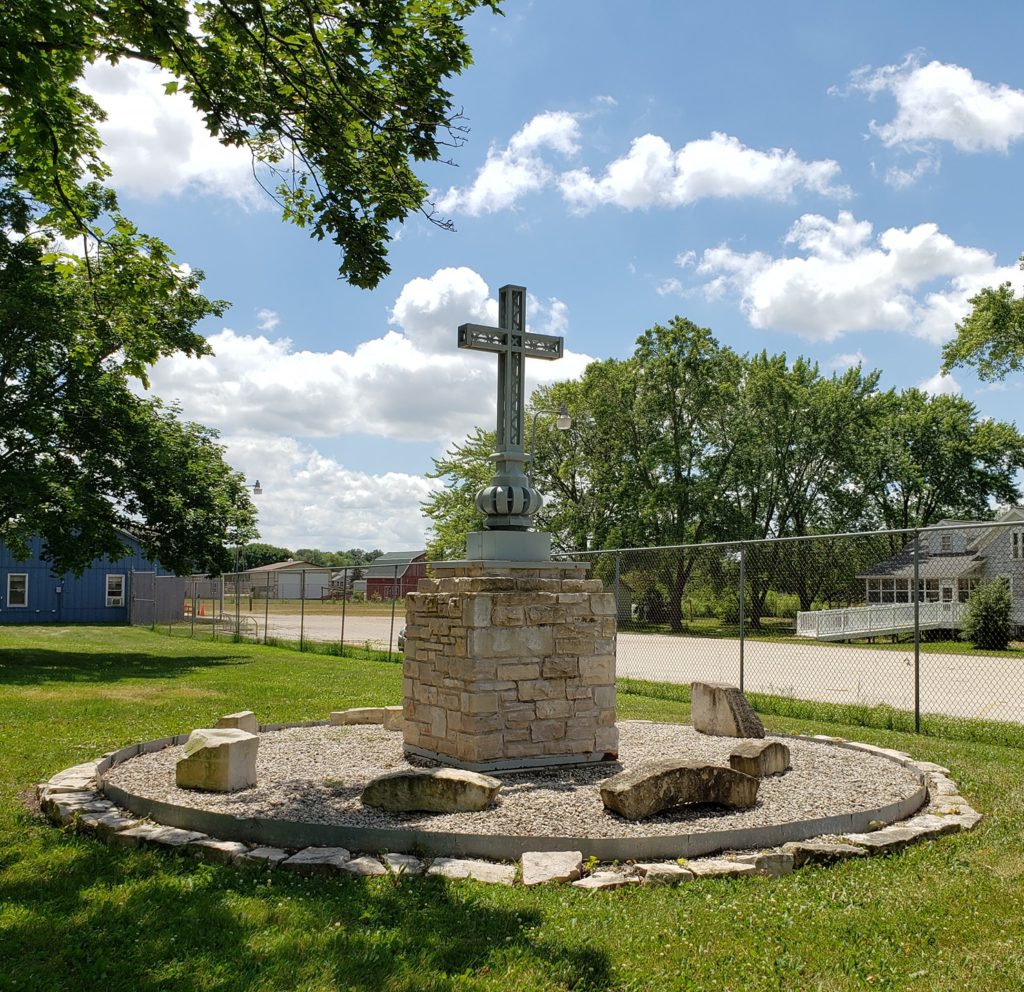
St. Louis Church Cross (32)
St. Louis Church, a long-standing monument on the Fond du Lac skyline since 1870, was destroyed by fire on March 19, 2007. All that remained were the north steeple and cross. The cross was lovingly preserved and dedicated on The Village grounds in 2010.

